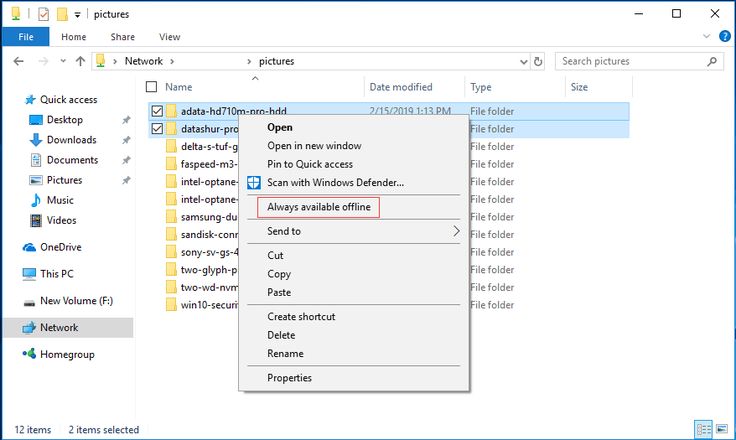Best File Synchronization Software for Seamless Data Management” – Best File Synchronization Software for Seamless Data Management sets the stage for this enthralling narrative, offering readers a glimpse into a story that is rich in detail and brimming with originality from the outset. In an era where data is constantly on the move, effective file synchronization software is essential for ensuring that your information remains accessible and up-to-date across multiple devices.
This software not only facilitates smooth transitions between platforms but also significantly enhances productivity and collaboration in both personal and professional settings.
In today’s fast-paced world, the need for effective communication has never been more crucial. From personal relationships to the corporate realm, the way we convey our thoughts and ideas can significantly impact our interactions and outcomes. This article delves into the various aspects of communication, exploring its importance, the different forms it takes, and tips for enhancing our communicative skills.Communication is often defined as the process of exchanging information, ideas, thoughts, or feelings between individuals or groups.
It encompasses a wide range of activities, from verbal conversations to non-verbal cues and written correspondence. At its core, effective communication is about ensuring that the message intended by the sender is accurately received and understood by the recipient.One of the fundamental reasons communication holds such importance in our lives is its role in building and maintaining relationships. Whether in a personal or professional setting, clear communication fosters trust and understanding.
When individuals feel they can express themselves openly, it creates an environment where collaboration and cooperation can flourish. On the contrary, poor communication can lead to misunderstandings, resentment, and conflict, which can jeopardize even the strongest of relationships.The forms of communication can be broadly categorized into verbal, non-verbal, and written forms. Verbal communication involves spoken words, and it’s the most common form of interaction among people.
It’s not just about what is said, but how it is said—the tone, pitch, and volume all contribute to the message’s meaning. For instance, a simple “I’m sorry” can convey different feelings depending on the tone of voice used. Non-verbal communication, on the other hand, includes body language, facial expressions, gestures, and even silence. Research indicates that a significant portion of our communication is non-verbal, with some estimates suggesting that as much as 93% of the message conveyed can be attributed to tone and body language rather than the actual words spoken.
This highlights the importance of being aware of our non-verbal cues, as they can either reinforce or contradict our spoken words.Written communication is another critical form that has gained immense importance, especially with the rise of digital communication. Emails, text messages, reports, and social media posts play a significant role in how we communicate today. Effective written communication requires clarity and conciseness to ensure the intended message is conveyed without ambiguity.
It’s essential to consider the audience when crafting written messages, as different contexts may require varying levels of formality and tone.To improve our communication skills, there are several strategies we can employ. Firstly, active listening is a vital component of effective communication. This involves fully concentrating on the speaker, understanding their message, responding thoughtfully, and remembering key points. Active listening helps to ensure that the other person feels heard and validated, which can enhance mutual respect and understanding.Another strategy is to be mindful of our body language.

Being aware of our non-verbal cues can help us convey confidence and openness. Maintaining eye contact, using appropriate gestures, and adopting an open posture can all help create a more positive communicative environment. Likewise, being attuned to the body language of others can provide valuable insights into their feelings and attitudes, helping us to adjust our approach accordingly.Clarity is also paramount in effective communication.
Whether verbal or written, ensuring that our message is clear and concise helps to minimize misunderstandings. Avoiding jargon or overly complex language can make our messages more accessible to a broader audience. When in doubt, it’s helpful to ask for feedback to ensure that the message has been understood as intended.Moreover, adapting our communication style to suit the audience is crucial.
Different situations and individuals may require different approaches. For instance, communicating with a colleague may differ from how we would address a close friend or a formal client. Recognizing these differences and adjusting our tone and style accordingly can lead to more successful interactions.Emotional intelligence is another key factor in effective communication. Being aware of our emotions and those of others can help us navigate difficult conversations.
It allows us to respond rather than react, leading to more constructive dialogue. For instance, if someone is upset, acknowledging their feelings before addressing the issue can help de-escalate tension and foster a better understanding.Finally, practice is essential for improving communication skills. Like any other skill, the more we practice effective communication, the more proficient we become. Engaging in conversations, seeking feedback, and reflecting on our interactions can provide valuable learning experiences.
Many people find role-playing scenarios helpful in developing their communication skills, allowing them to explore different approaches and techniques in a safe environment.In conclusion, effective communication is an essential skill that impacts every aspect of our lives, from personal relationships to professional success. By understanding the various forms of communication and implementing strategies to enhance our skills, we can foster stronger connections and navigate challenges more effectively.
Remember, communication is a two-way street; it requires both speaking and listening. By striving for clarity, being mindful of non-verbal cues, and continually practicing, we can all become better communicators. Ultimately, the goal is to create understanding and connection, paving the way for a more harmonious interaction in all areas of our lives.


